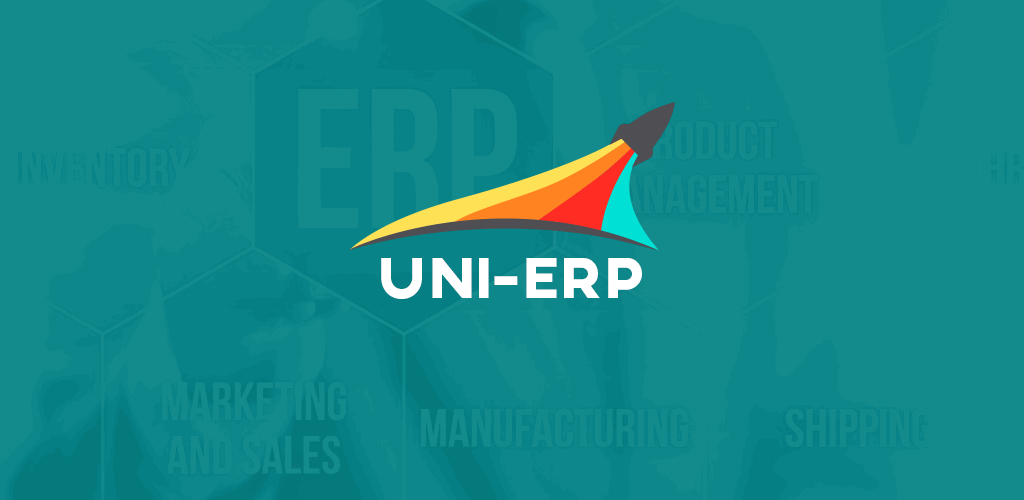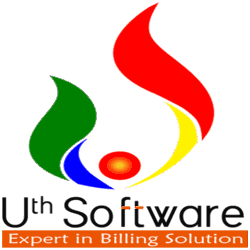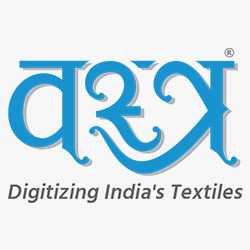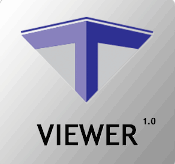What Is Textile Industry Software?
Textile industry software is a form of technology built primarily to streamline and automate key processes in the textile industry. This comprises inventory management, supply chain management, production planning, and quality control. The program is tailored to the textile industry's unique needs and challenges, allowing businesses to increase efficiency, cut costs, and boost overall productivity.
Inventory management is a fundamental element of textile industry software. This program allows textile companies to effectively track and manage their inventory levels, lowering the danger of stockouts or overstocking. This is critical in a fast-paced business like textiles, where meeting demand and ensuring enough supply are critical to success.
Another significant feature of textile industry software is its supply chain management capabilities. This enables businesses to successfully manage their supplier relationships, track shipments, and assure timely delivery of products. Textile firms may shorten lead times, cut costs, and increase overall efficiency by optimizing the supply chain. Textile sector software also plays an important part in production planning.
It enables businesses to plan and schedule production in response to demand, capacity, and resource availability. This ensures that production works smoothly and efficiently, eliminating delays and bottlenecks that can lead to lost revenue. Quality control is another key area where textile industry software may have a substantial impact. With comprehensive tracking and monitoring features, the software enables businesses to maintain high quality standards while immediately addressing any faults or flaws in the manufacturing process.
This not only guarantees client happiness, but also safeguards the company's reputation and brand image. Overall, textile industry software provides a complete solution for managing the complicated operations of textile enterprises. It assists firms in optimizing their operations, lowering expenses, and improving their bottom line, making it an indispensable tool for enterprises seeking to remain competitive in the fast-paced and ever-changing textile industry.
What Are The Recent Trends In Textile Industry Software?
The textile sector has undergone tremendous technological improvements, resulting in the development of a variety of software solutions tailored to specific needs. As the demand for efficient operations and sustainability grows, textile industry software has developed to offer new and cutting-edge solutions.
Let's explore, we'll look at the latest trends in textile industry software and how they might help your business.
1. Cloud-Based Solutions: One of the most significant trends in textile industry software is the move to cloud-based solutions. Cloud technology has various benefits, including remote access, real-time data management, and cost reductions. Textile organizations can use cloud-based software to streamline operations, boost team collaboration, and remain up to current on real-time information.
2. Integration Of AI And ML: Artificial intelligence (AI) and machine learning (ML) are changing the way the textile business functions. These technologies allow software to analyze and understand enormous amounts of data, resulting in important insights for decision-making and increased process efficiency. AI and machine learning have numerous uses in textile industry software, including forecasting consumer trends and automating production operations.
3. Sustainable Tracking And Management: With rising environmental concerns, there has been a substantial emphasis on sustainability in the textile business. As a result, textile industry software now incorporates tools for tracking and managing sustainability parameters including carbon footprint, water use, and waste management. This not only helps textile manufacturers accomplish sustainability targets, but it also appeals to environmentally aware consumers.
4. Traceability And Supply Chain Management: Traceability and supply chain management features have become more prevalent in textile industry software. As consumers grow more aware of the origin and manufacturing process of their garments, textile companies must provide openness in their supply chains. Textile industry software, which includes capabilities such as product tracking and supply chain visibility, helps organizations retain accountability and establish consumer trust.
5. 3D Design And Virtual Prototyping: Traditional methods of design and prototype in the textile sector can be time-consuming and expensive. However, by incorporating 3D design and virtual prototype into textile industry software, organizations may cut the time and costs involved with physical prototyping. This also enables quick revisions and approvals, resulting in faster production.
Benefits Of Using Textile Industry Software
Textile industry software is a sophisticated tool developed to streamline and optimize numerous processes in the textile industry. This software has numerous benefits, ranging from manufacturing and inventory management to marketing and sales, that can have a significant impact on a textile business's overall success.
Let's explore, we will look at the primary benefits of utilizing textile industry software and how it may help your firm expand.
1. Increased Efficiency And Productivity: One of the primary advantages of adopting textile industry software is the increased efficiency and productivity it provides to the company. This program automates a variety of manual operations, including data entry and inventory tracking, saving time and lowering the risk of human error. With reduced processes, your staff can concentrate on more important duties, increasing productivity.
2. Improved Inventory Management: Inventory management is critical in the textile sector since it entails tracking raw materials, supplies, and completed goods. Textile industry software offers real-time inventory tracking, ensuring that you always have the necessary ingredients on hand for manufacturing. It also helps to eliminate overstocking, minimize waste, and lower storage expenses.
3. Cost Savings: By automating operations and improving inventory management, textile industry software can assist to decrease costs while increasing profitability. With reliable data and insights, it is easier to discover areas where expenses can be lowered and resources used more efficiently.
4. Improved Customer Experience: In today's competitive market, the customer experience is critical to the success of any organization. Textile industry software allows you to handle customer orders, monitor manufacturing progress, and track delivery, resulting in speedier order fulfillment and more customer satisfaction. This, in turn, can improve client retention and loyalty.
5. Improved Data And Analytics: Textile industry software gives real-time data, allowing you to obtain vital insights into your company's operations. Customizable reports and analytics enable you to make data-driven decisions and find areas for development. This allows you to keep on top of market trends and make strategic business decisions.
6. Integration And Scalability: Textile industry software can be linked to other company systems, such as accounting and marketing, to provide a smooth flow of data across departments. This eliminates the need for human data entry, resulting in accurate and consistent data. Furthermore, this software is scalable, which means it can expand alongside your company and adapt to changing requirements.
Important Factors To Consider While Purchasing Textile Industry Software?
When acquiring software for the textile sector, various variables must be considered. This software has the potential to significantly improve textile enterprises' overall efficiency by streamlining operations, managing inventories and production. As a result, it is critical to carefully examine and choose a software solution that addresses your organization's specific goals and expectations.
Here are some important factors to bear in mind while selecting textile industry software:
1. Functionality And Features: The first step in analyzing software is to comprehend its capabilities and features. It is critical to evaluate the software's capabilities and determine whether it will fulfill your company requirements. From inventory management to order processing and production planning, ensure that the software has all of the features and functionalities that your textile business wants.
2. User-Friendly Interface: A user-friendly interface is essential for the successful adoption and use of any product. Employees who utilize complex and difficult-to-use software may become frustrated and less productive. Look for software with a simple and user-friendly interface that requires no training and can be quickly incorporated into your current systems.
3. Compatibility And Integration: The software's compatibility and integration capabilities are also vital to evaluate. It should be able to interact easily with your existing systems and procedures, ensuring effective data transfer and workflow.
4. Scalability: As your company expands, your software requirements will change. As a result, it is critical to select scalable software that can keep up with your growing business requirements. This eliminates the need to invest in a new software solution in the near future, saving time and money.
5. Technical Support And Updates: Software may experience technical faults or require updates from time to time. Make sure the software vendor provides dependable technical support and regular updates to guarantee that the program runs well and does not disturb your business operations.
6. Security: Textile businesses handle sensitive data like designs, patterns, and client information. Therefore, it is vital to prioritize the software's security characteristics. Look for software that has data encryption, user access limits, and automatic backups to keep your data safe and secure.
7. Cost And Return On Investment: Last but not least, examine the software's cost and potential return on investment (ROI). Compare the pricing structure, including any additional fees or maintenance charges, to the possible advantages and cost reductions that the program can provide.
What Are The Key Features To Look For In Textile Industry Software?
When it comes to selecting the best textile industry software for your company, there are numerous crucial characteristics to consider for optimum efficiency and success. These capabilities will not only help you streamline your processes, but also boost your overall productivity and profitability.
Let's explore, we'll go over the key aspects you should look for while evaluating textile industry software solutions.
1. Inventory Management: One of the most important aspects of any textile industry software is effective inventory management. A thorough system should enable you to monitor and manage your inventory levels, including raw materials, finished goods, and supplies. Look for software that provides real-time updates and interfaces with other systems, such as sales and purchasing, to guarantee that inventory data is correct and up to date.
2. Production Planning And Scheduling: To meet demand, textile enterprises require effective production planning and scheduling technologies. Look for tools that will help you plan and organize production processes, allocate resources, and track progress. This functionality can help you streamline your manufacturing process, shorten lead times, and fulfill orders on time.
3. Costing And Pricing: Proper costing and pricing are critical for every textile company. Your program should be capable of precisely calculating material and manufacturing costs, taking into account overhead costs, and assisting you in setting competitive rates. This feature allows you to better manage your margins and pricing strategy, which can have a direct impact on your bottom line.
4. Quality Control: Quality control is essential in the textile sector to maintain consistent and high-quality finished goods. Your software should include tools that allow you to monitor and regulate quality at all phases of production, from raw materials to final goods. Look for systems that let you create quality standards, run quality tests, and generate reports for analysis.
5. Tracking And Tracing: Traceability is critical in the textile business, because raw materials move through several stages before becoming a finished product. Your software should track and trace every stage of the manufacturing process, from procurement to manufacture, to ensure complete visibility and transparency. This tool can assist you in identifying problems and taking appropriate corrective action as soon as possible.
6. Integration: Textile sector software requires integration with other systems such as accounting, CRM, and e-commerce platforms. This enables smooth data sharing and eliminates the need for manual data entry, saving you time and reducing the likelihood of errors. Look for software that integrates easily with your existing systems.
7. Scalability: Your software should be able to develop alongside your business. Look for solutions that are scalable, so you can add more features and users as needed. This will save you the difficulty and expense of always switching to new software as your firm grows.
Why Do Businesses Need Textile Industry Software?
The success of a textile firm is determined by a variety of elements, including efficient production methods, correct inventory management, prompt order fulfillment, and competitive pricing. In today's fast-paced and highly competitive industry, manual ways of handling these components can be time-consuming and wasteful. This is where textile industry software enters the picture.
Textile industry software is a specialist application meant to streamline and optimize many aspects of a textile firm, resulting in increased production, cost savings, and overall growth. It provides a consolidated platform for managing all areas of the business, including raw material procurement, order tracking, and delivery. Let's look at the top reasons why organizations require textile industry software.
First and foremost, textile industry software facilitates process automation. It eliminates the need for manual data entry, lowering the risk of human error. This not only saves time, but also guarantees accurate and consistent data handling. Businesses can save time and resources by automating procedures like inventory management and order processing, allowing them to focus on more critical areas of their operations.
Another important feature of textile industry software is the capacity to provide real-time visibility and tracking. Businesses can use this software to track the production process in real time, from raw materials to final goods, allowing them to quickly identify and address any difficulties or delays. This insight also applies to inventory management, giving firms a clear picture of their stock levels, minimizing overstocking and stockouts.
Furthermore, textile industry software provides comprehensive reporting and analysis capabilities. It gives organizations extensive insights into production, sales, and inventory data, allowing them to make sound decisions based on correct information. This is especially important for firms that want to enhance their processes and satisfy client expectations. In addition to these benefits, textile industry software includes functions like supply chain management, cost tracking, and vendor management. These solutions can help firms improve their supply chain, cut expenses, and strengthen relationships with suppliers and partners.
How Much Time Is Required To Implement Textile Industry Software?
The time necessary to integrate textile industry software varies according to the program selected and the size of your firm. On average, the implementation procedure can last from a few weeks to several months. One of the most important elements influencing implementation time is the software's complexity and the level of customisation required.
If you choose a basic, out-of-the-box solution, the implementation procedure will most likely be faster than with custom-built or highly specialized software. Another thing to consider is your organization's readiness for the software. This includes having the appropriate infrastructure in place, such as hardware and internet access, as well as ensuring that your team is properly trained to utilize the software.
Furthermore, the size of your company and the amount of data that must be moved into the software can influence the installation timeline. Larger organizations with more data may take longer to adopt textile industry software than smaller businesses. It's vital to remember that speeding through the implementation process might lead to issues and faults, resulting in a longer total time for the product to be completely functional.
It is essential that you collaborate closely with your software provider and set aside adequate time to properly integrate the software and ensure a seamless transition. The installation time for textile industry software might range from a few weeks to several months, depending on a number of factors. To establish a realistic implementation timeframe, you must thoroughly examine your business goals and collaborate closely with your software vendor.
What Is The Level Of Customization Available In Textile Industry Software?
When it comes to textile industry software, there are numerous solutions available on the market. One important element to consider when selecting this type of software is the level of customization available. This is critical because each textile firm has distinct needs and expectations. The extent of customization in textile industry software varies by source. Some software may provide a basic amount of customization, allowing firms to tailor key features and functionalities to their own procedures. On the other hand, some software may provide a great level of customisation, allowing organizations to create tailor-made solutions that are in line with their operations. It is vital to note that the extent of customisation varies depending on the type of textile industry software being utilized. For example, inventory management software may provide greater customization choices than production planning software.
When examining the extent of customization in textile industry software, keep the following points in mind:
1. Feature Customization: The software should enable firms to tailor features to their specific processes and workflows. This could involve inventory tracking, order management, and reporting.
2. User Interface Customization: A user-friendly interface is required for the software to function efficiently and effectively. Look for software that enables organizations to tailor the user interface to their own preferences and needs.
3. Integration Customization: Textile enterprises frequently employ many software packages for various procedures. To avoid operational disruptions, ensure that the software under consideration can be integrated with existing tools and systems.
4. Scalability: As organizations expand, their needs and processes may evolve. As a result, it is critical to select software that is scalable and can handle any future customisation needs.
5. Technical Help: In the event of any challenges or inquiries about customisation, the software vendor should give dependable technical help to resolve any concerns and ensure a seamless deployment. It is advisable to select textile industry software that allows for a high level of customization to fit the business's individual requirements. However, it is critical to carefully evaluate the level of customization provided and determine whether it meets the business objectives. This will allow you to make more educated decisions, ultimately increasing production and efficiency in the textile sector business.
Which Industries Can Benefit The Most From Textile Industry Software?
Textile Industry Software is a powerful instrument that can aid a wide range of businesses. Its configurable features and efficient processes make it an invaluable addition to any textile-related firm.
Let's explore, we'll go over which industries can benefit the most from Textile Industry Software and how it can improve their operations.
1. Apparel And Fashion Industry: Textile Industry Software is particularly beneficial to the garment and fashion industries. Keeping up with inventory management, production planning, and supply chain management can be difficult given the ever-changing trends and demands. Textile Industry Software streamlines these processes by delivering real-time data and guaranteeing a continuous flow of operations. It also assists in managing complex supply chains, shortening lead times, and increasing overall efficiency.
2. Home Textile Industry: Textile business Software can also aid the home textile business tremendously. This business produces a wide range of products, including bedding, curtains, rugs, and more, therefore efficient inventory and production management is crucial. Textile Industry Software offers powerful inventory monitoring, production planning, and quality control systems that help home textile firms satisfy consumer expectations while effectively controlling expenses.
3. Auto Industry: Textiles are an important part of autos, and Textile Industry Software can help automotive manufacturers streamline their manufacturing operations. The program includes capabilities including material procurement, supplier management, and production tracking, which help automobile firms manage their textile components more efficiently. It also assures that resources are delivered on schedule, enhances quality control, and lowers the chance of manufacturing delays.
4. Industrial Textile Industry: Textile Industry Software can also aid industries that manufacture technical and industrial textiles, including medical, aerospace, and construction. These textiles must meet high quality and safety standards, and the software can assist in tracking and managing the entire manufacturing process. It also streamlines product testing and quality control procedures, ensuring that these businesses adhere to the necessary requirements.
5. Retail Industry: Textile industry software can also be used by retail organizations to manage inventory and optimize the supply chain. The software delivers real-time data on product demand and inventory levels, allowing retailers to make smart purchasing decisions and decrease the risk of overstocking or stock-outs. It also helps to maintain product quality and provides insight into customer preferences, allowing for improved purchasing and marketing tactics.
Conclusion
To summarize, selecting the best textile industry software for your organization is a critical decision that must be carefully considered and evaluated. As you can see from our buyer's guide, there are several aspects to consider, including your specific business needs, budget, and level of technical expertise. It is critical to properly investigate and evaluate various software solutions, read reviews, and even request demos to ensure that the program fulfills your needs and interacts seamlessly with your existing systems.
Keep in mind that investing in high-quality textile industry software can greatly boost your company's efficiency, streamline procedures, and eventually raise earnings. With the appropriate software, you can keep ahead of the competition while also meeting the industry's ever-changing standards. We hope this buyer's guide has helped you find the best textile industry software. Remember to evaluate all of the important factors and make an informed decision to propel your business forward.






















